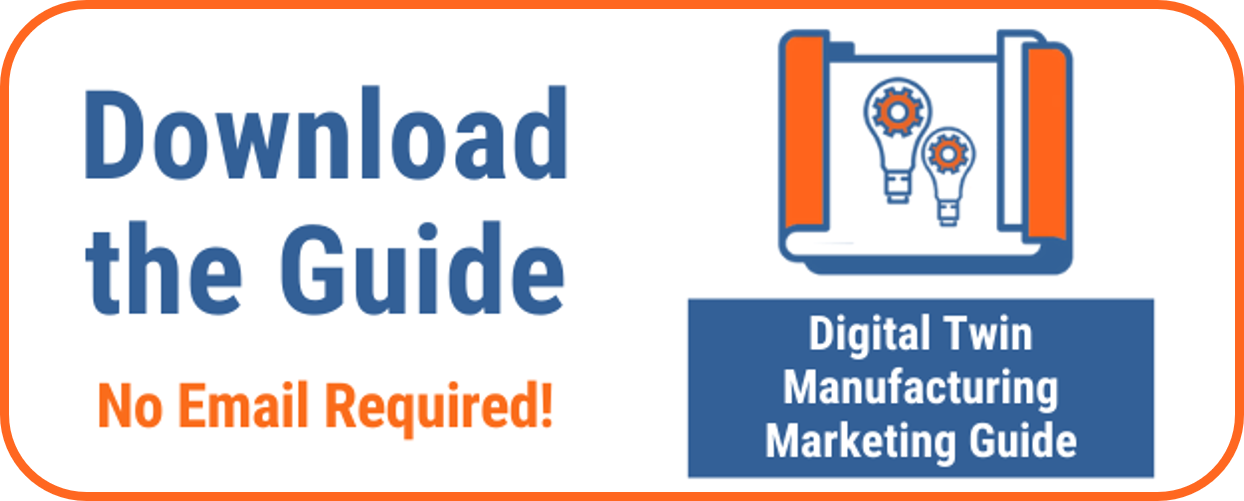It’s that time of the year again: The Content Marketing Institute (CMI) has released its 2023 manufacturing trends report. We’ve got a number of stats to share with you — a mixed bag of struggles and successes, including one “same old story” that needs to be addressed ASAP.

The 2023 Manufacturing Content Manufacturing Benchmarks, Budgets, and Trends report has been published, and we recommend you check it out. (We were fortunate enough to have been quoted in the CMI’s post on the report!).
In this post, we’re going to touch on the top ones that we see impacting our clients — especially the reason why we think 61% of manufacturing marketing departments could be in trouble.
We’ve also included some quotes from CMI research director and report author Lisa Murton Beets for added perspective.

Lisa Murton Beets
Here’s a quick video on who the Content Marketing Institute is and why we feel they’re such an authority on content marketing.
1. Success: 81% of manufacturing marketers are moderately to extremely successful
It’s great to see that 56% of manufacturing marketers are experiencing success and that 25% of manufacturing marketers are either very or extremely successful. Yet, there is also room for many organizations to improve.
This bodes well for the future of using content in your marketing efforts. It’s why the report also says that 71% of manufacturing marketers reported that content marketing has become more important to their organization over the last year.
Big Jump: One area that also jumps out at us is that 44% of manufacturing marketers were able to generate sales and revenue from their marketing efforts — up from 33% last year. That’s a sign that more manufacturers are waking up to the value of content marketing.
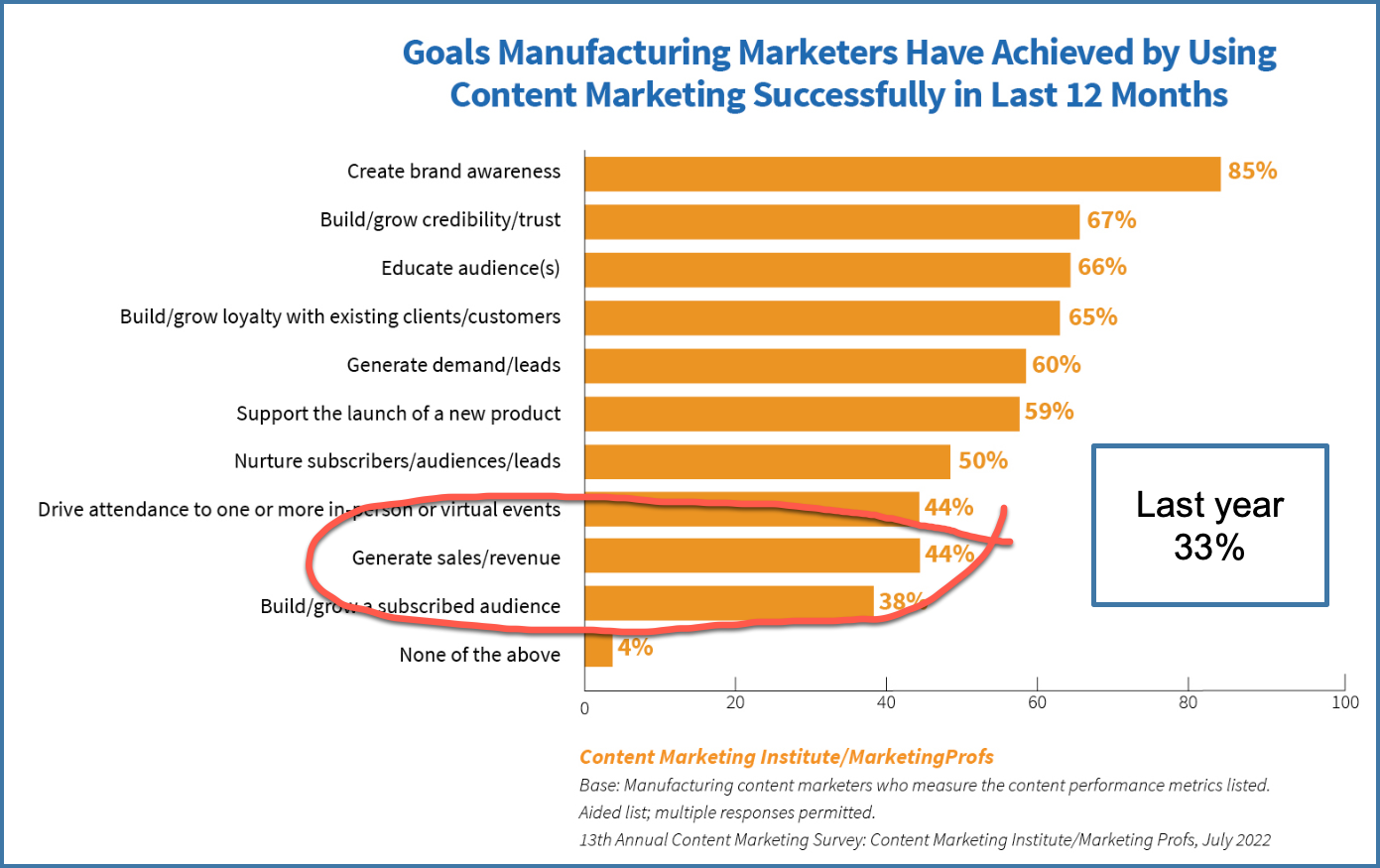
2. Struggle: Only 32% of manufacturing marketers have a documented content marketing strategy
We’ve reported in the past how marketers who document their marketing strategy are over 3X more likely to succeed. Yet, almost 70% of content marketers don’t document a marketing strategy.
“Without a strategy, too many content marketers are creating content for the sake of creating content — in many cases, this could mean responding to ad hoc requests.”
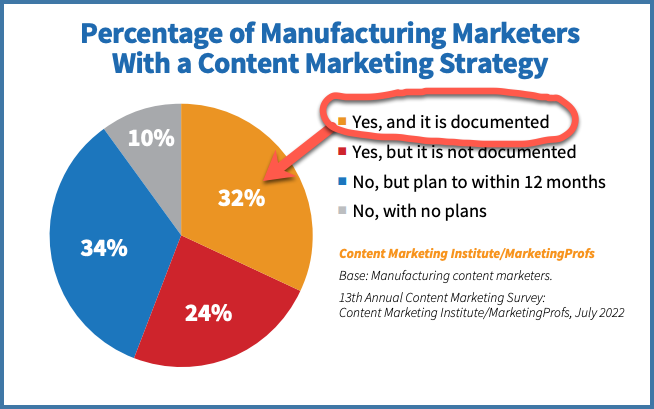
Why is documenting so important? For one, research has indicated that you’re 3X more likely to be successful if you document your strategy. A few reasons why include:
- It helps you refine and define your strategy and goals.
- It provides clarity and organization.
- It allows for sign-off and consensus.
As business advisor Doug Lambert often tells us, “If it’s worth doing, it’s worth putting in writing.”
Be sure to check out our blog post on how to create a manufacturing marketing plan for a sales-oriented company.
3. Success: 57% of marketers said videos are producing the best results
Video was the clear winner in terms of results over the past year, with short articles coming in second.
It’s worth noting that videos and short articles are the most widely created and used assets in the last 12 months (90% and 86%, respectively). Those also tend to be the easiest pieces of content to produce (we’re not talking about quality here).
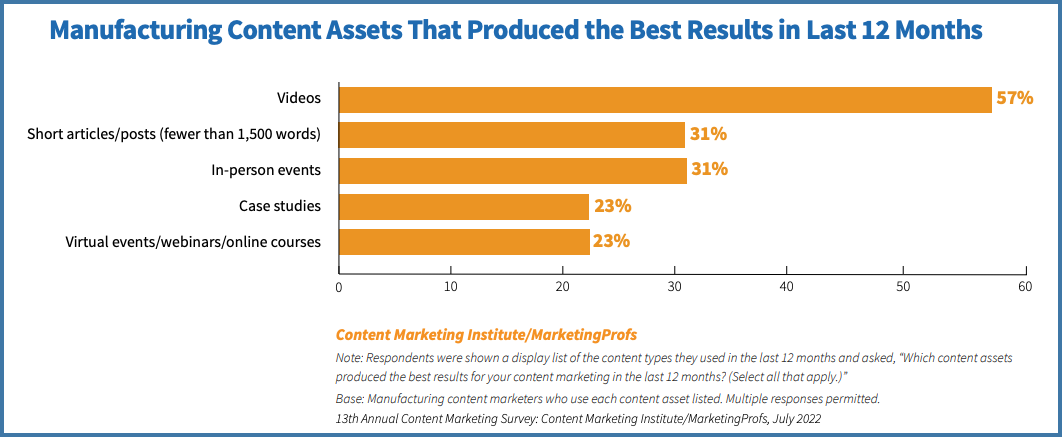
Of course, there is always room for debate about what is included in “results” (see below). But however you interpret the data, one thing is clear: Video must be part of your content marketing strategy moving forward.
Where do we see success with video?
In our experience, results have been largely dependent on the distribution channel. In terms of results for organic and paid social media platforms, video definitely captures people’s attention and generates more impressions and higher conversion rates.
However, for SEO, we find in-depth posts and written content outperform video when it comes to ranking for strategic keywords.
PRO TIP: Think about using long-form posts to boost your SEO efforts, then pull from that content to create videos.
4. Struggle: 61% of organizations said one group (or person) is responsible for handling all types of content in their organization
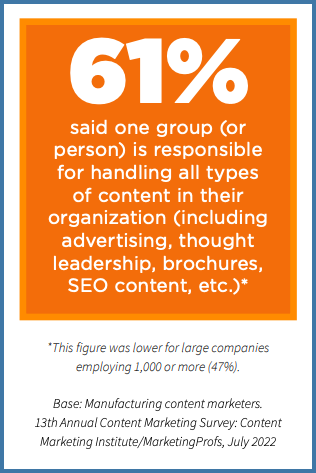
Our mission has always been to help small marketing departments — 1-3 person teams. And according to the CMI research, 61% of manufacturers have one group or person, responsible for handling all types of content in their organization.
Unless these companies get that lone person some help, here’s why we think they’re in trouble, which I summarize in this video:
In today’s world of specialization, this is a tall order. It’s a rare bird who is a quality writer and can also manage SEO, paid advertising, trade show marketing, video production, overall sales and marketing strategy … the list goes on and on.
If you find a person like that for a one-person marketing team, pay them very well (because they will likely cost you north of six-figures).
But even if you can retain them, they will likely burn out. It’s very difficult for a one-person team to produce exceptional content and manage its distribution on a daily basis while also juggling strategy and interfacing with the leadership team.
Too often, content marketers get wrapped up in content creation, rather than their ability to lead the efforts to create.
It’s probably why the report said that 46% of respondents expect their organization to hire or contract for content producers in 2023.
5: Same old story: We see a common theme among the top three challenges
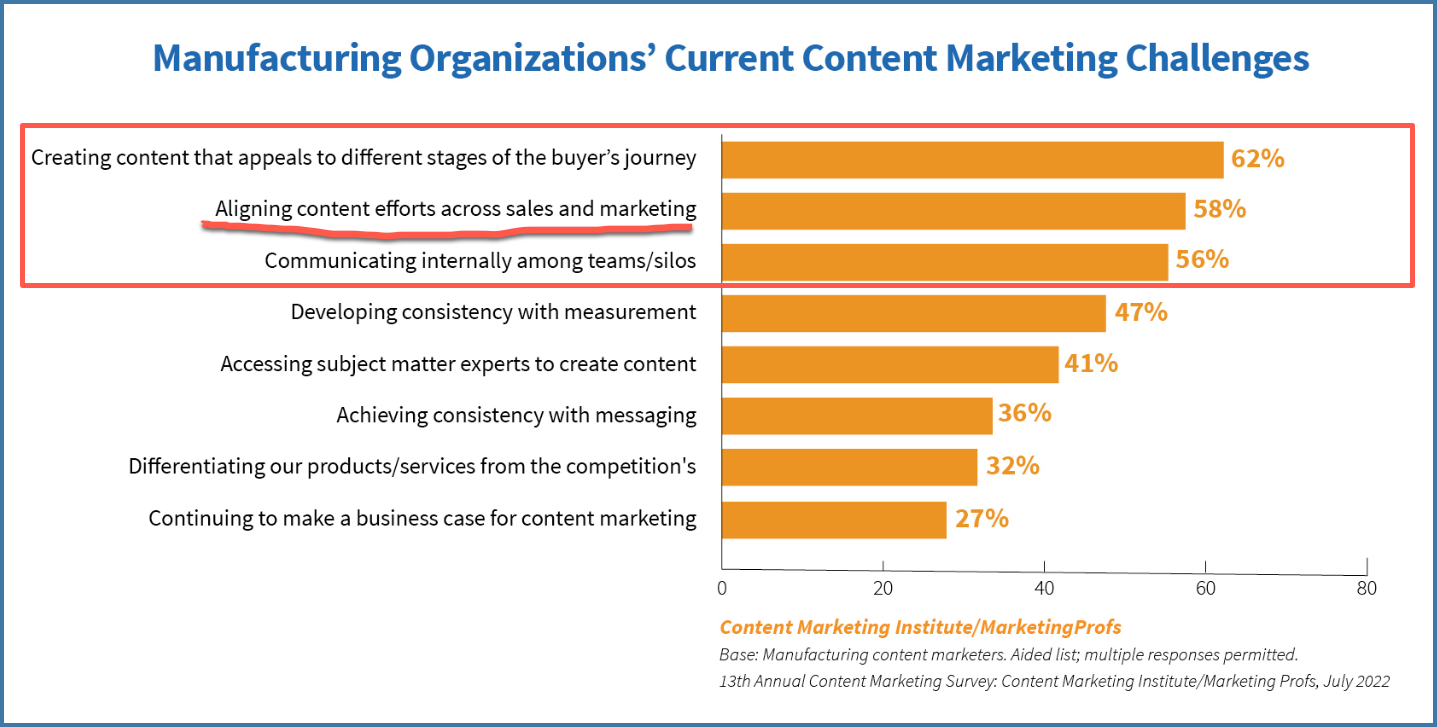
When we read the challenges section of the CMI report, we weren’t surprised at the top three. We would make the argument that they are all — ultimately — tied to sales and marketing alignment.
Here are the top three struggles:
- Creating content that appeals to different stages of the buyer’s journey: If you’re struggling with this, it may be because marketing isn’t aware of what those stages actually are. Have you collaborated with sales to identify them?
- Aligning content efforts across sales and marketing: Always a problem in the past, this is becoming an even bigger challenge now as marketing is called on to deliver to digital shoppers. Sales and marketing have historically been siloed. It will take significant effort to align for the future.
- Communicating internally among teams / silos: We commonly hear about how much sales ignores marketing leads. Why? Perhaps sales isn’t aware of who is being targeted, or they had no training on how to actually sell to the leads that are coming in. It’s a breakdown of communication, and it’s wasting huge marketing dollars.
Why do we think these challenges are all tied to sales and marketing alignment?
Because they’re the issues that plague companies with poor sales and marketing alignment. And they’re at the top of the manufacturing sector’s list because manufacturers, for the most part, have always been sales-driven organizations.
Questions to ponder about the “very” to “extremely successful” marketers
A commenter on LinkedIn noted that stats like the ones you’re seeing here can be interpreted in many ways. That’s true — but that’s the beauty of market research. It makes you ask and find answers to the data, which in turn can generate insights that improve your business.
So what questions do we have? Well, we’d pose the following about the data as it relates to the “very” to “extremely successful” marketers that make up 25% of companies surveyed:
Are the 32% of marketers that have a documented marketing strategy also many of the 25% of marketers that are “very” to “extremely successful”? We’d bet they are, because documenting your strategy leads to organizational alignment and disciplined execution.
Are the 61% of organizations that rely on one person to handle all their marketing also part of the 25% of marketers that are “very” to “extremely successful”? We’d be surprised if they are, unless their companies have given them additional resources to outsource capabilities. It’s very difficult to go it alone in today’s specialized world of digital sales and marketing.
Are the 25% of marketers who are “very” to “extremely successful” also part of the 20% of companies that have best in class marketing and sales alignment? Considering that one of the biggest challenges facing marketers today is sales and marketing alignment, we’d bet money that those best in class organizations don’t have siloed efforts.
Perhaps those answers are for another report, another year. But CMI should be commended for the concrete data provided in this year’s report.
One final note: Believe us when we tell you that we’ve touched on just a few noteworthy pieces of data in the report. It’s loaded with intriguing insights. Check out the CMI research here.

